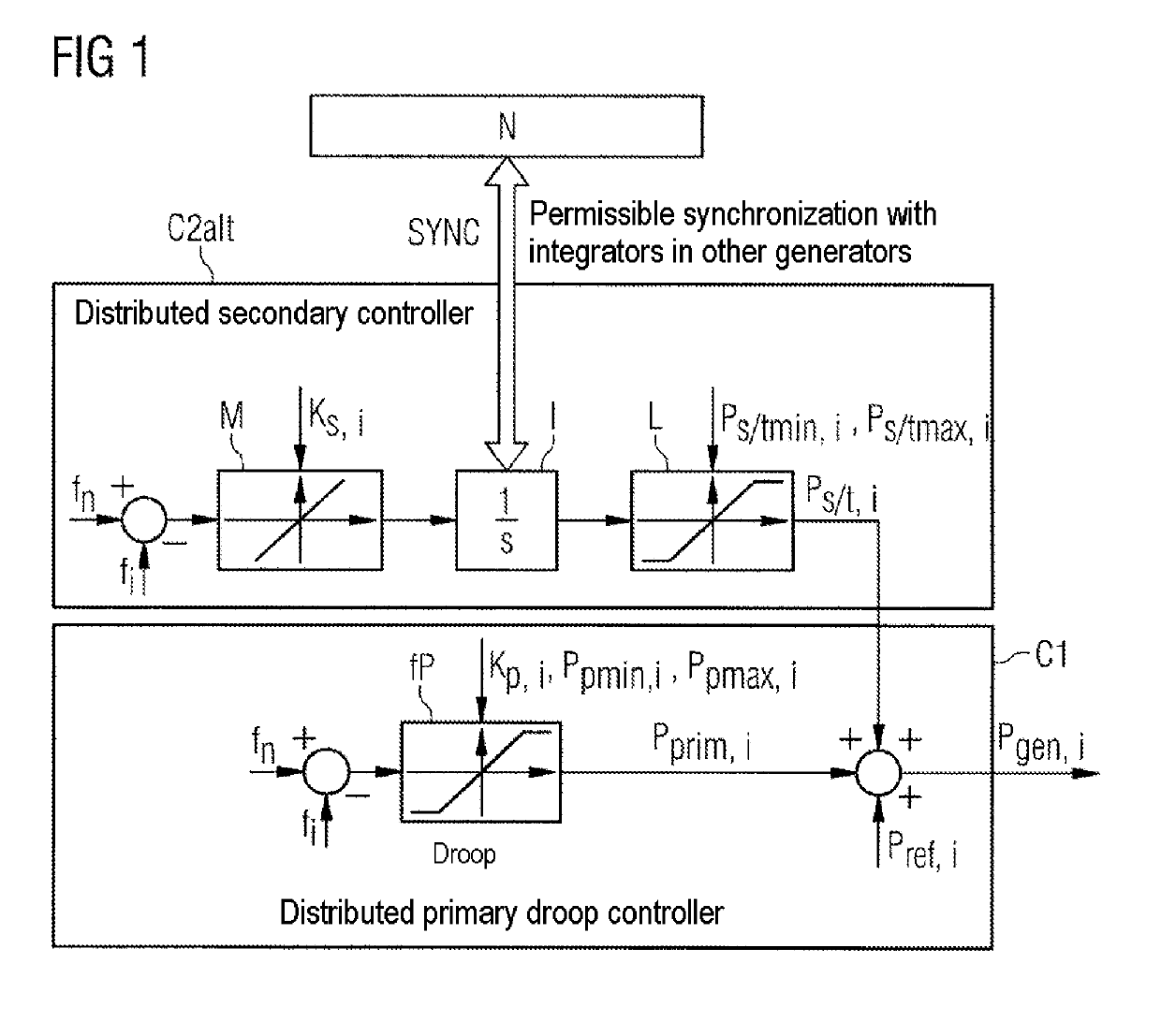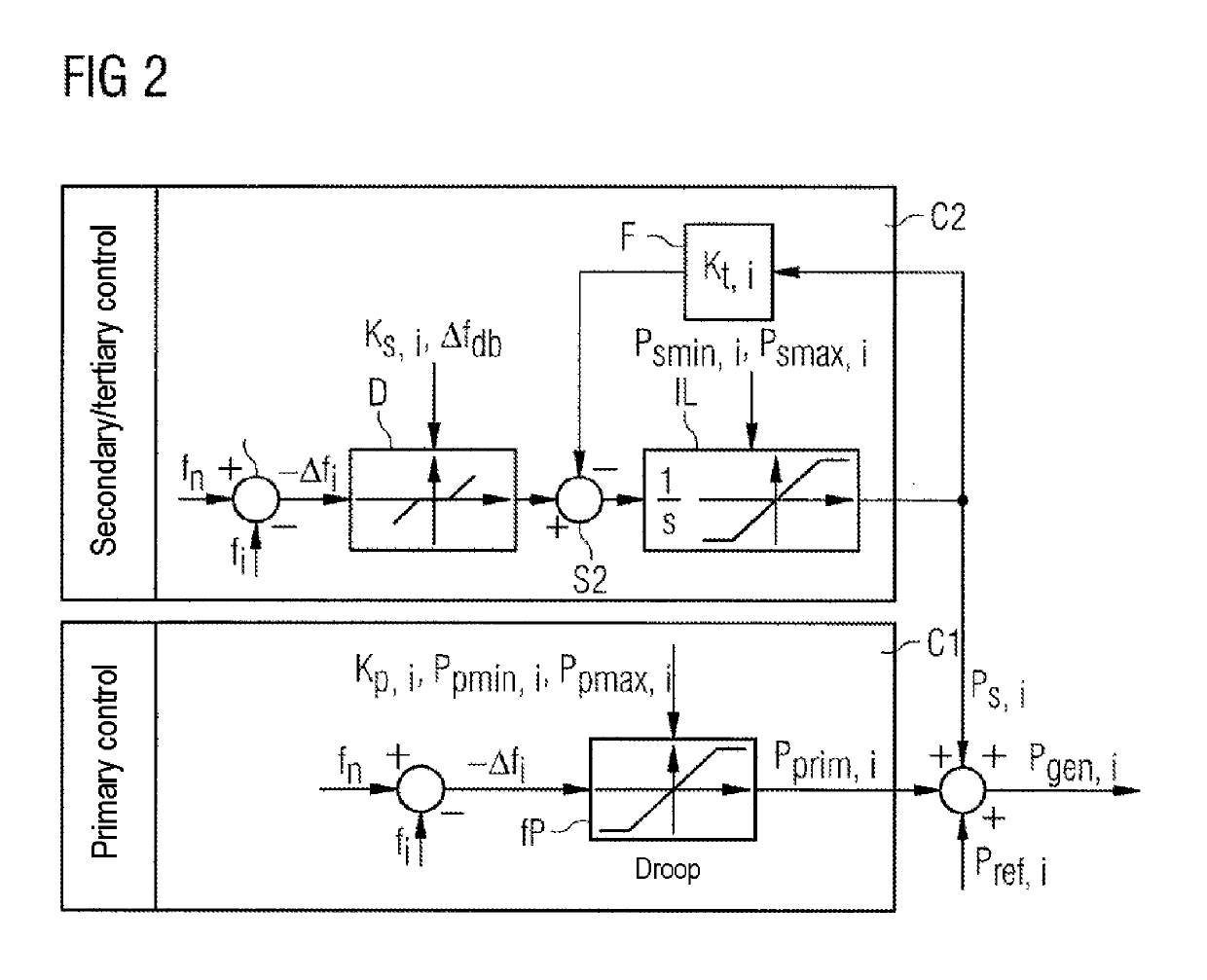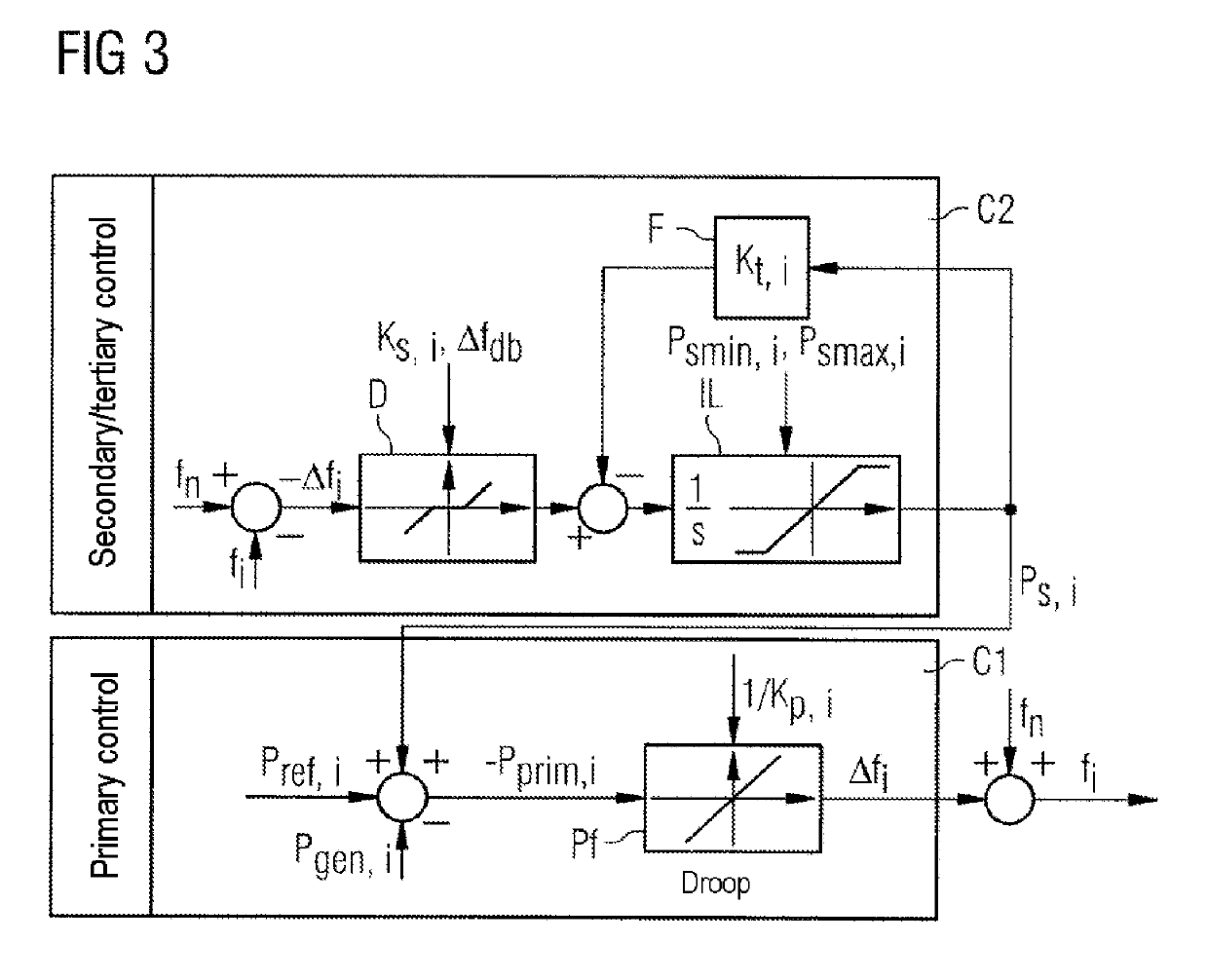Control apparatus for large power supply systems having a multiplicity of small, decentralized and possibly volatile producers
a control apparatus and power supply system technology, applied in the direction of ac network voltage adjustment, information technology support system, climate sustainability, etc., can solve the problems of unfavorable production shift, increased demand for primary and secondary control output, and unfavorable production shift, etc., to achieve good compatibility and high robustness
- Summary
- Abstract
- Description
- Claims
- Application Information
AI Technical Summary
Benefits of technology
Problems solved by technology
Method used
Image
Examples
Embodiment Construction
[0018]All control apparatuses for decentralized production of a primary and secondary / tertiary control output usually have, as illustrated in FIGS. 1 to 3, a distributed primary controller C1 for each producer for control with the aid of what is known as a “droop” and, in addition, a distributed secondary controller C2alt or C2, wherein the latter contains, as basic element, an I controller I or IL, which possibly has a limiter L.
[0019]In order to organize stable operation of AC power networks, in electrical engineering in power producers, the setting value of a “droop” is used. This element is accordingly designated by “droop” in FIG. 1. The characteristic value of the droop describes, amongst other things, for example the negative slope of the normalized characteristic curve f(P). This represents the dependence of the setpoint of the effective output P on the measured or estimated frequency f. Thus, a “droop” or controller characteristic curve is used in composite operation of man...
PUM
 Login to View More
Login to View More Abstract
Description
Claims
Application Information
 Login to View More
Login to View More - R&D
- Intellectual Property
- Life Sciences
- Materials
- Tech Scout
- Unparalleled Data Quality
- Higher Quality Content
- 60% Fewer Hallucinations
Browse by: Latest US Patents, China's latest patents, Technical Efficacy Thesaurus, Application Domain, Technology Topic, Popular Technical Reports.
© 2025 PatSnap. All rights reserved.Legal|Privacy policy|Modern Slavery Act Transparency Statement|Sitemap|About US| Contact US: help@patsnap.com



